Fishes
Media
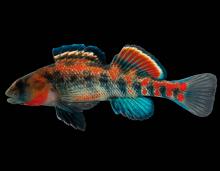
Species Types
Scientific Name
Etheostoma, Percina, Ammocrypta, and Crystallaria spp.
Description
Darters have been described as the hummingbirds of the fish world: colorful, small, and quick. Missouri has about 44 different types of darters. They are most diverse in the fast, clear, rocky streams of the Ozarks.
Media

Species Types
Scientific Name
Acipenser fulvescens
Description
The lake sturgeon is Missouri’s largest sturgeon and is rare and endangered in our state. Note its conical (not shovel-nosed) snout. Despite its name, in Missouri this fish is almost always found in big rivers, not lakes.
Media
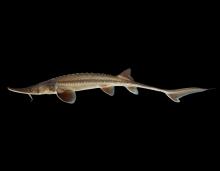
Species Types
Scientific Name
Scaphirhynchus albus
Description
The pallid sturgeon is federally and state endangered. This rarely found but widely distributed bottom dweller lives mostly in the Missouri and lower Mississippi rivers.
Media

Species Types
Scientific Name
Ichthyomyzon fossor
Description
The northern brook lamprey is a great example of a nonparasitic lamprey. While lampreys as a group are famous for being fish parasites, brook lampreys are essentially bottom feeders.
Media
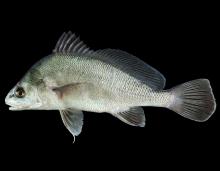
Species Types
Scientific Name
Aplodinotus grunniens
Description
The freshwater drum is a silvery, deep-bodied fish with a distinct humpbacked appearance. It occurs in large rivers, lakes, and impoundments over most of Missouri.
Media
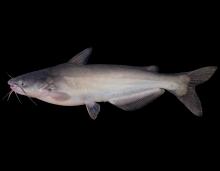
Species Types
Scientific Name
Ictalurus furcatus
Description
The blue catfish is a big-river fish, preferring swift chutes, pools with noticeable current, and silt-free substrates. In Missouri, it's most common in the Mississippi, Missouri, and Osage rivers.
Media
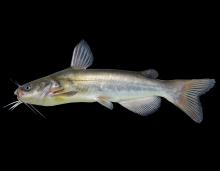
Species Types
Scientific Name
Ameiurus catus
Description
The white catfish is often stocked in fee-fishing lakes and other private waters. It sometimes escapes into natural stream systems. Unlike our other bullheads, it has a moderately (though not deeply) forked tail fin.
Media

Species Types
Scientific Name
Esox masquinongy
Description
The muskellunge is long and slender, with a mouth full of razor-sharp teeth. This big, nonnative pike is stocked in selected lakes in the Ozark region and near St. Louis.
Media

Species Types
Scientific Name
Esox lucius
Description
The largest pike native to Missouri, the northern pike can be more than 4 feet long and weigh more than 40 pounds. Missouri is on the southern edge of the range of this species. Because of its rarity here, it is of little importance as a game fish.
Media
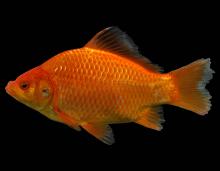
Species Types
Scientific Name
Carassius auratus
Description
Goldfish are not native to North America. They often escape into the wild from bait buckets and other causes, but there are few self-sustaining populations in Missouri.
See Also


Media

Species Types
Scientific Name
Amphiuma tridactylum
Description
The three-toed amphiuma is an eel-like, completely aquatic salamander. It has very small forelimbs and hind limbs, each with three tiny toes. In Missouri it’s found only in the Bootheel region.
Media

Species Types
Scientific Name
Siren intermedia nettingi
Description
The western lesser siren is an eel-like, aquatic salamander with external gills, small eyes, small forelimbs with four toes, and no hind limbs. In Missouri, it’s found mostly in the Bootheel and northward in counties near the Mississippi River.
About Fishes in Missouri
Missouri has more than 200 kinds of fish, more than are found in most neighboring states. Fishes live in water, breathe with gills, and have fins instead of legs. Most are covered with scales. Most fish in Missouri “look” like fish and could never be confused with anything else. True, lampreys and eels have snakelike bodies — but they also have fins and smooth, slimy skin, which snakes do not.





















